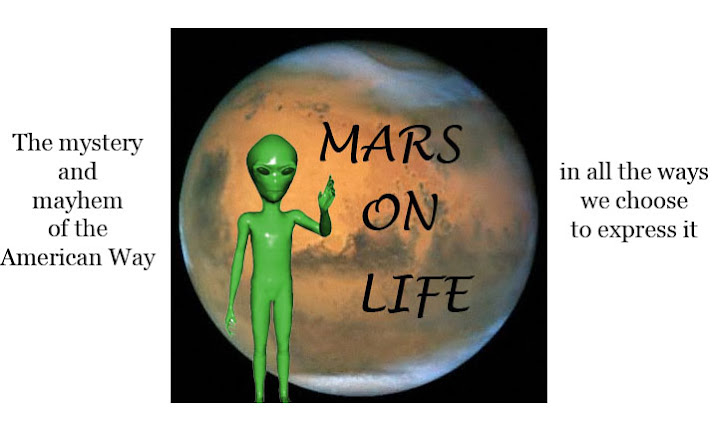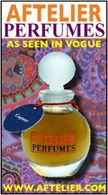In order to fully appreciate historical costume design, you sort of need to have lived through the era that is being portrayed. It's one thing to look at an overview of fashion from a given decade and make some generalized assumptions, but it's quite another to differentiate salmon-colored flared Levis from black bootcut ones and intuit the social implications contained in either pair (one was deadly). This is my way of letting you know that I was a teenage product of the seventies. That I can parse any seventies-inspired collection for its veracity and attention to tiny, stupid detail. I love the seventies for all the wrong reasons; I did not love the ubiquitous Farrah hairstyle and I did not love the slogan t-shirts bearing Brady Bunch imperatives. I did love that high-waisted slacks with large bells marked you as a trendsetter, but only if you wore them no later than 1976. I loved that you could braid small Indian bells into your hair and reek of cheap strawberry-scented oil from some boutique that was still trying desperately to suck oxygen from the aqualung of the sixties.
It was a wonderfully hideous era.
I had two style inspirations in 1976. One, the cover of the Roxy Music Country Life album. The other, this Cosmo cover of Renee Russo. The former provided all the cosmetic gui dance I needed for the next several years and the latter was responsible for a life-long love of sarongs and quirky necklaces.
dance I needed for the next several years and the latter was responsible for a life-long love of sarongs and quirky necklaces.
I love the movie Dazed and Confused for its dead-to-rights recreation of the fashions of 1976. There's usually something off about costuming , but whoever designed for Dazed and Confused didn't miss a pedantic beat. The attention to detail is mind-blowing. It is so attentive it is hyper-correct, making me wonder if the costumer and I attended the same pissant high school in Nowheresville, Midwest.
, but whoever designed for Dazed and Confused didn't miss a pedantic beat. The attention to detail is mind-blowing. It is so attentive it is hyper-correct, making me wonder if the costumer and I attended the same pissant high school in Nowheresville, Midwest.
We were an awfully long way from Paris. And Vogue as well, we were distanced from Vogue by virtue of our northern prairie roots. You didn't read Vogue and work at Burger King, wearing Lily of France Glossies panties underneath your crappy brown polyester uniform. You read Cosmo if you were cool, Glamour if you were not. Seventeen was off the map. Good girls read Glamour. Badasses ("with attitude" the notes said) read Cosmo. This may explain my entire career.
Let's go shopping at the end of August, 1975. We've got a mall now. It's been open for a year and it has a Spencer Gifts and a Chess King and a record store, a Sears, a Casual Corner, and a Levis store. I buy cheap feather earrings in Spencer and five pairs of jeans at Levis.
I've already got a pair of faded Levis (pre-501 cult) that have straight legs. It's the pair from the year before, so they're nice and worn in now. What I'm buying today will be the replacement pair; they won't look good for another seven months and in eight months I'll rip the butt out of them scaling a chain link fence around someone's swimming pool. For now, however, they are the new pair, and they don't exactly fit well. The Levis fit is still shrink-to, meaning that the waist is too large and when I sit down I suppose you can spy a bit of butt crack. C'est la vie, everyone suffers similarly. I wish I were a teenager in Paris.
I buy four pairs of cords. Here is where things get tricky. Levis has a wide range of color and style options. You need to pay careful attention to the social significations. Cool colors are: off-white, black, forest green, navy, and tan. Uncool: rust, red, salmon, pink (this is why Matthew McConaughey's townie loser wears the salmon). Bootcut is cool, straight legs are cool, really tight legs are cool, bell bottoms are fatal.
Bell bottoms are permitted, however, on high-waisted trousers, so I buy two pairs of those and two skinny metallic-mirror belts to thread through the belt loops. One belt is green and the other is gold. The high-waisted trouser is a new phenomenon that clearly had something to do with the early disco drumbeat; not everyone picks up on this and therefore I am seen as a fashion leader, especially when I wear these slacks with buffalo platforms and black socks.
I also purchase fake Earth Shoes from Thom McCann (my boyfriend will hate these) and a pair of platforms that makes me six feet tall (and thus taller than the boyfriend).
Since I'm running low on funds, I bop over to Woolworth's and buy two cheap v-neck sweaters, one red and another acid green. They are four dollars each. Underneath these I will wear a fashion innovation from 1972, the Qiana shirt. These shirts have ghastly patterns one might find on chintz sofas. They have matching scarves to tie around the neck. At home I have two peasant blouses that I wear on summer nights, bra-less, and until it gets really cold (the third week of September) I will wear those and display my flat, tanned stomach.
My fashion accessories are a string of turquoise puka shells and various strands of beads and feathers I've tied together myself. This will be the extent of my design abilities, although I do not recognize it then. For some years in the future, I will labor under the delusion that I have artistic talents. I do not.
A month or so down the road, my mother will force upon me a horrendous Sears parka, brown, shapeless, and hip-length, when what I really want is a monkey-fur jacket. Sometimes I will wear my grandmother's raccoon coat, but the pelts have dried out beyond repair and when it snows, it stinks.
Everyone dresses more or less the same, with some exceptions. The boy you didn't want to date (in other words, the boy who wound up a billionaire Hollywood producer) wore the aforementioned rust-colored bell bottom Levis with those horrid floral shirts that had flowing, romantic sleeves. Your own punk boyfriend was affecting a Brando-meets-Iggy Pop look that you found devastatingly sexy. Where is he today? Sitting in the same taxi outside the snowbound Duluth airport, hoping for a five-buck tip. Oh, Baby, it's cold outside.
Language has likewise evolved since the Stone Age, so we innocently branded some men's fashions "faggy." Nowheresville, Midwest did not breed either the fashionably or the linguistically gifted. "Faggy" meant that the clothes weren't macho; into this category go the embroidered gauze shirt and the striped, short-sleeved polo. "Faggy" had nothing to do with sexual orientation and everything to do with a most atavistic need: the need not to have one's boyfriend branded a wimp. This craven ambition could not be accomplished while wearing embroidered anything. It also couldn't be handled by pink, salmon, or rust. It was a monochromatic primitive devoir best handled by manly black and white.
So we were a bunch of little shits. In a year, everything would change. It always does. The French maxim "Plus ça change, plus c'est la même chose" applies to teenage girls but not to fashion. By 1977 the twin killers of disco and the yuppie would invade the suburbs. This event would result in the decline of Levis and the hegemony of the Gap. Nineteen seventy-six was the interstitial year between hangover hippie and Saturday Night Fever, with a special fashion disconnect that happens when worlds collide.
Happy New Year, chickadees!
Tuesday, January 1, 2008
Ring in the Old!
Subscribe to:
Post Comments (Atom)









12 comments:
Reading this is one of the most enjoyable things to do on the first morning of 2008.
DCB.
Yess I love all the Roxy Music covers. Amanda Lear on For Your Pleasure is my idol.
What a nice thing to say, DCB! Thank you.
Miss Woo, Roxy Music always had the best covers. The minute I saw Country Life I ran right out and bought greasy blue eyeshadow. Ah, GLAMOUR!
GREAT POST!!!
Goodness gracious, can I add you to my blogroll? You are my '70s fashion information hero.
Rhiannon, I added you after I learned about you on the wonderful Tango Pirates!
Thanks for your lovely comments!
Wow, I love the insight! This really takes me back into an era. I need to watch Dazed & Confused from a sartorial standpoint now.
Oh, to wear bells in my hair...
Heather, bells are acceptable in any era, but then again, I'm an old hippie at heart.
Do watch the movie for the fashion angle and note the subtle messages in the choice of garments. Perhaps I should scan some yearbook shots for comparison against some stills from the film.
I really enjoyed reading this post.
Costume errors drive me crazy. I will re-watch Dazed from a fashion angle, as I appreciate a film where extra thought and care goes into the nuances of the wardrobe.
Claire, they sure play that movie enough. I've seen it at least four times in the past six weeks, maybe more.
The Levis, by the way, were unisex, and tended to be cut more towards a male physique than they were to a woman's. The butt crack came from having a small waist. If the hips fit, the waist was always a size too large.
You know, I read, probably over a year ago now, about a line of denim, that was going to make jean sizes using the same ideology as bra sizes. As in, a waist size and a "booty" size. I'm not sure what became of it, but I thought it was genius; final someone putting an end to the eternal butt crack vs' waist size struggle.
I don't know that the problem is universal--in fact, while it seems to be something we women bemoan with regularity, I see plenty of today's young women without the shape that the women of my generation had. Oh, that makes me sound freaking old, but the point is that I think body shape has changed a bit again.
My favorite jeans ever were a pair I saw in Marshalls:
Waist 23"
Length 38"
Post a Comment